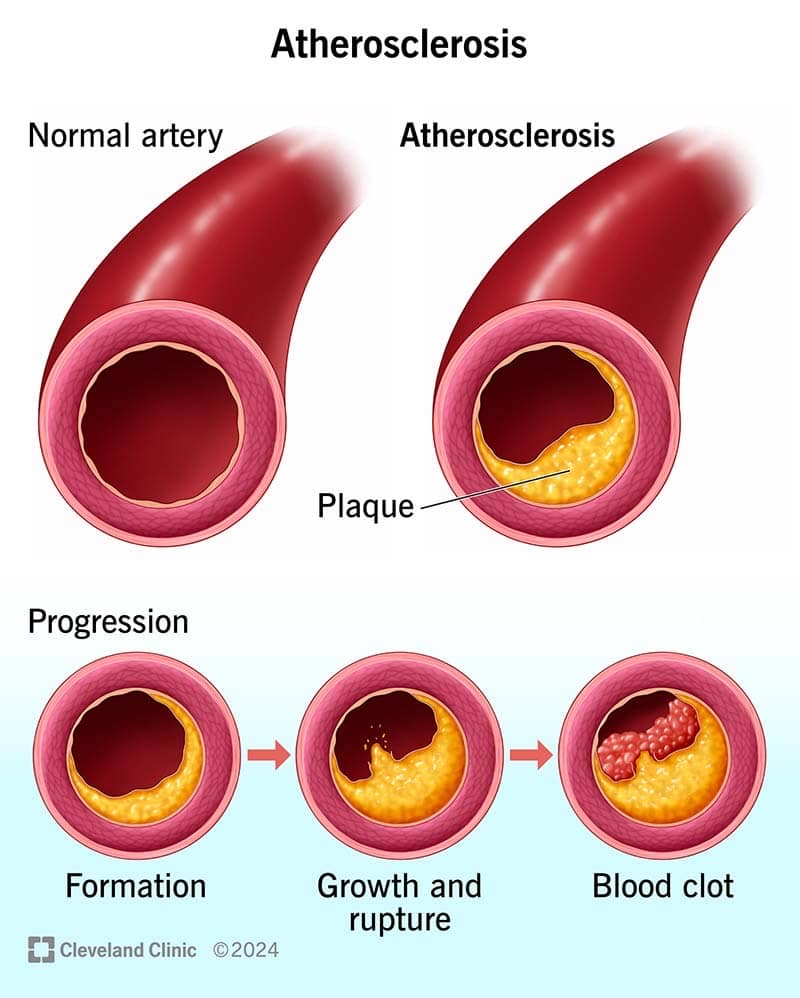Nigerian Association of Foreign Trained Pharmacists

Arteriosclerosis and atherosclerosis are sometimes used to mean the same thing... Well, so I thought 😁 But there's a difference between the two terms.
➡️ Arteriosclerosis happens when the blood vessels that carry oxygen and nutrients from the heart to the rest of the body become thick and stiff. These blood vessels are called arteries. Healthy arteries are flexible and elastic. But over time, the walls in the arteries can harden, a condition commonly called hardening of the arteries.
➡️ Atherosclerosis is a hardening of your arteries from plaque building up gradually inside them. Plaque consists of fat, cholesterol and other substances. This plaque buildup limits blood flow. As the plaque grows, the opening (lumen) of the artery narrows, leaving less room for blood to flow. This means less blood can reach the organs and tissues. Plus, the constant force of blood flow can lead to plaque erosion or rupture, causing a blood clot to form.
SYMPTOMS
➡️Symptoms often don’t start until an artery is very narrow or blocked. Many people don’t know they have plaque buildup until they have a medical emergency like a heart attack or stroke.
➡️Symptoms of moderate to severe atherosclerosis depend on which arteries are affected;
♦️ Heart arteries:
☑️Chest pain or pressure, called angina.
♦️ Arteries leading to your brain:
☑️Sudden numbness or weakness in arms or legs.
☑️Trouble speaking, slurred speech
☑️Sudden or temporary loss of vision in one eye, or drooping muscles in your face.
♦️ Arteries in the arms and legs:
☑️Leg pain when walking, called claudication. This is a symptom of peripheral artery disease (PAD).
☑️Lower blood pressure in the affected arm or leg.
♦️ Arteries leading to your kidneys
☑️High blood pressure or kidney failure.
CAUSES
➡️Atherosclerosis is a disease that slowly gets worse. It may begin as early as childhood. The exact cause is not known. It may start with damage or injury to the inner layer of an artery. Artery damage may be caused by:
🛑High blood pressure.
🛑High cholesterol.
🛑High triglycerides, a type of fat in the blood.
🛑Smoking or other tobacco use.
🛑Diabetes.
Insulin resistance.
🛑Obesity.
🛑Inflammation from an unknown cause or from diseases such as arthritis, lupus, psoriasis or inflammatory bowel disease.
RISK FACTORS
Risk factors for atherosclerosis include:
♣️Aging.
♣️A family history of early heart disease or stroke.
♣️Changes in genes
♣️Having inflammatory conditions such as lupus, inflammatory bowel disease or psoriasis.
♣️An unhealthy diet.
♣️Diabetes.
♣️High blood pressure.
♣️High cholesterol.
♣️Lack of exercise.
♣️Obesity.
♣️Sleep apnea.
♣️Smoking and other tobacco use.
PREVENTION
These lifestyle changes can help keep the arteries healthy:
Do not smoke or use tobacco.
♦️Eat nutritious foods.
♦️Get regular exercise
♦️Keep an active lifestyle.
♦️Keep a healthy weight.
♦️Control blood pressure, blood sugar and cholesterol.
Conclusion/Words for Pharmacists
Atherosclerosis is a common condition that many people are facing. But as healthcare provider we should be ready to help patients outside manage their condition so they can live your best life.